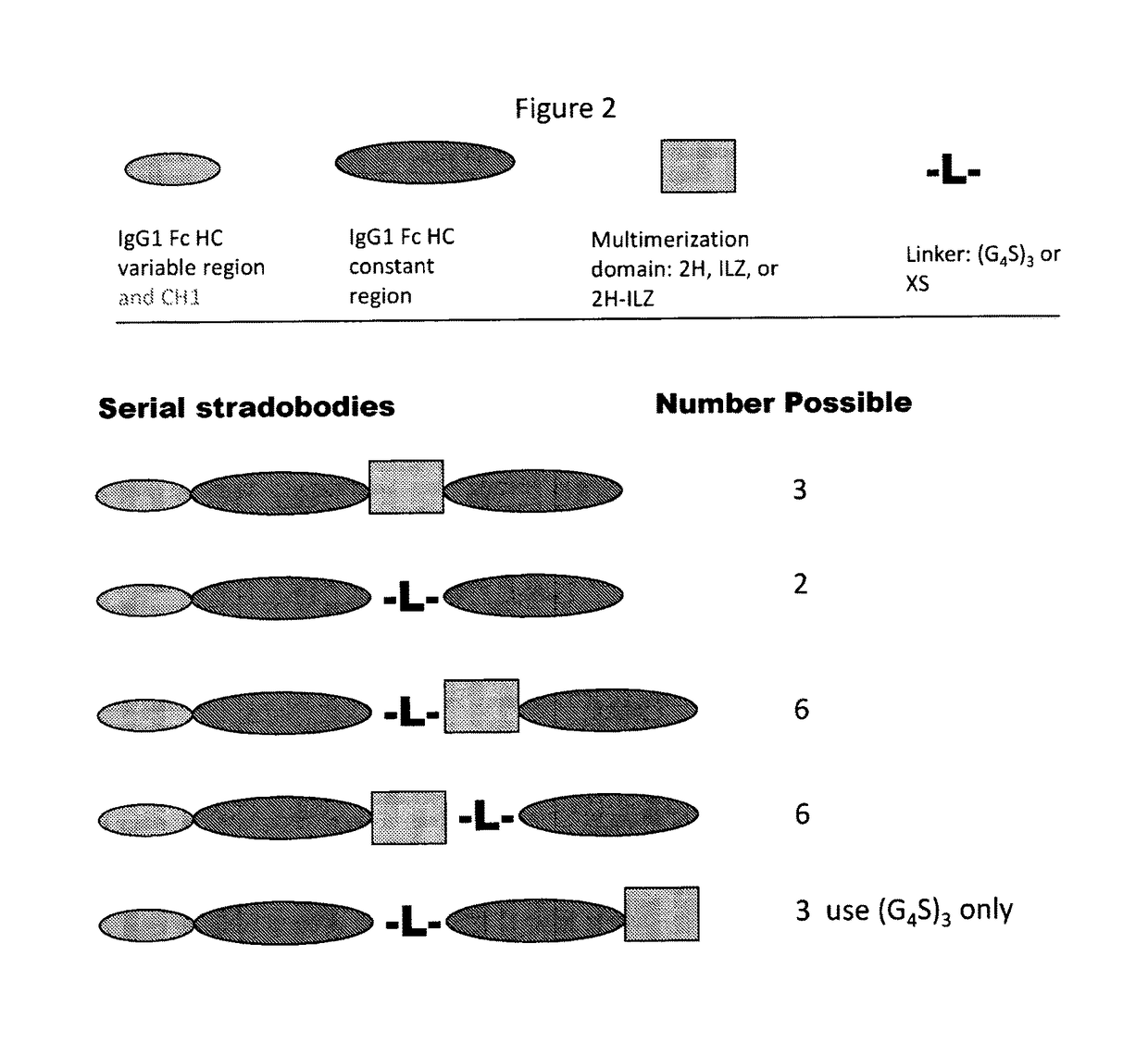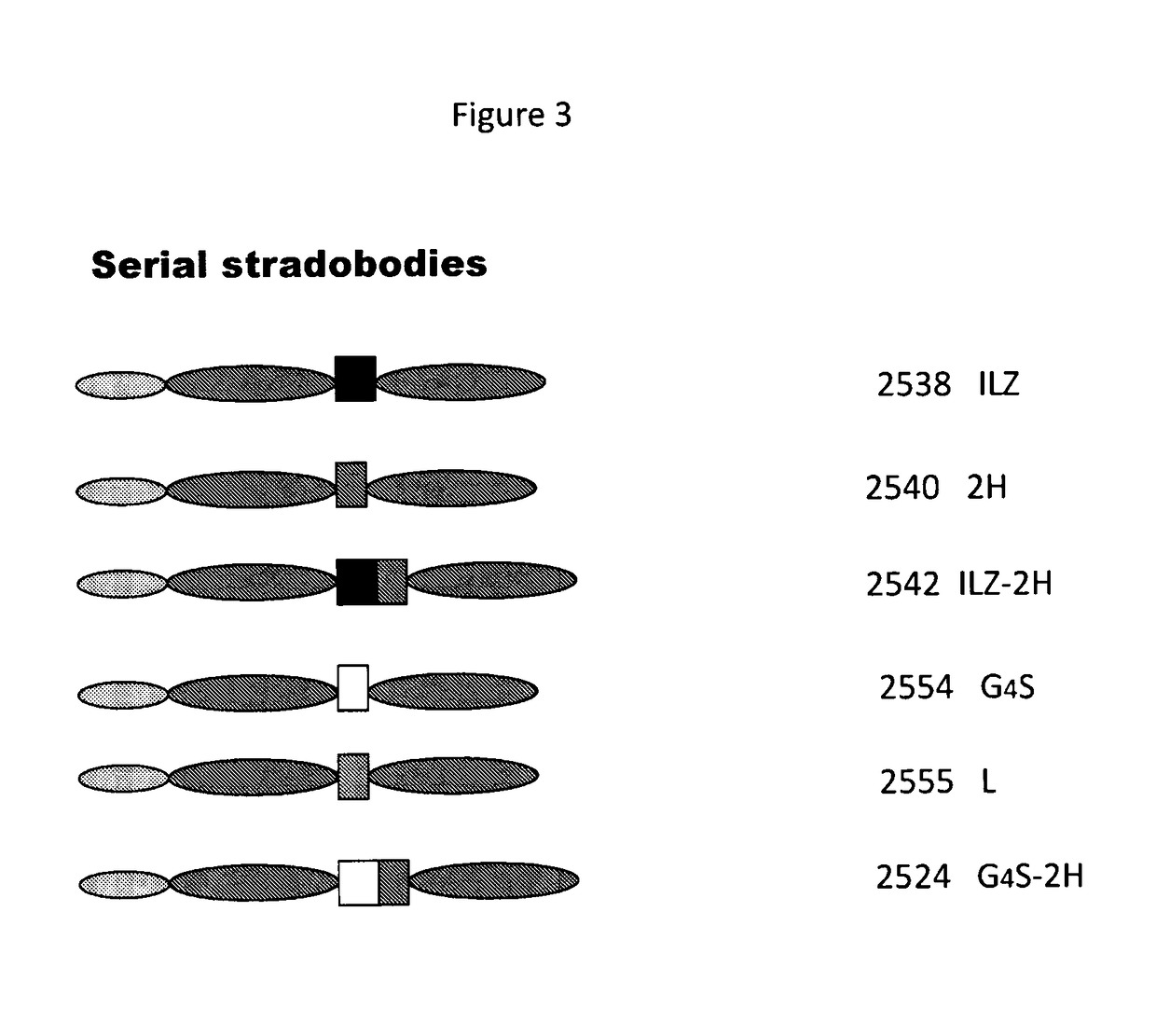Molecules with antigen binding and polyvalent FC gamma receptor binding activity
a gamma receptor and antigen technology, applied in the field of immunology, can solve the problems of high c1q binding, high cellular toxicity against target cells, strong multimerization, etc., and achieve the effects of direct cytotoxicity, antibody-mediated cell cytoxicity, and potent complement-dependent cell cytoxicity
- Summary
- Abstract
- Description
- Claims
- Application Information
AI Technical Summary
Benefits of technology
Problems solved by technology
Method used
Image
Examples
example 1
Production and Purification of HER2 / Neu-Specific Stradobodies
[0227]A synthetic DNA construct encoding the trastuzumab variable and CH1 region was obtained from Blue Heron Biotechnology (Bothell, WA) and fused by PCR to a corresponding Fc region containing the human IgG1 hinge, CH2 and CH3 regions to generate a reading frame encoding the full trastuzumab antibody heavy chain. cDNA was cloned into the expression vector pOptiVec (Invitrogen) for expression in mammalian cells. Simultaneously, a similar synthetic construct was obtained containing the trastuzumab light chain and cloned into the vector pcDNA3.3 (Invitrogen). Stradobody heavy chain constructs were generated by overlapping PCR using the trastuzumab heavy chain as a template with primers encoding the multimerization domains and linker regions. PCR products were cloned into the pOptiVec expression vector by TA cloning to generate the stradobody expression constructs. Following TA cloning, all constructs were confirmed by seque...
example 2
Cytoxicity and Binding Activity of HER2 / Neu-Specific Stradobodies
[0230]Antibody-dependent cell cytotoxicity was determined for several stradobodies, in comparison to the unaltered antibody GB2500. The ADCC assay was performed on freshly isolated NK cells as effectors cells with the low HER2 / neu expressing tumor cell line MDA-MB-231 as the target cell line. MDA-MB-231 cells were radioactively labeled with Cr-51, followed by a one hour incubation with one of the five following solutions: media only, media containing a non-binding human IgG1, media containing the monoclonal antibody GB2500, and media containing the stradobody to be tested. Cells were then plated out with freshly isolated human NK cells at varying NK to tumor cell ratios for four hours and the amount of killing was determined by the amount of Cr-51 released free into the media after the cells had been pelleted.
[0231]One to four independently expressed and purified protein batches from each of a total of 18 proteins, inc...
example 3
Further Purification of Stradobodies
[0240]In order to determine if stradobody multimers and monomers could be successfully separated, GB2054 was purified by ion exchange chromatography on a Mono Q column.
[0241]The results of the study, shown in FIG. 15, demonstrated that higher order multimers could be separated from monomers. Multimer peaks were not easily identified in the unfractionated peak (lane SB), but were readily detectable after ion exchange. Without wishing to be bound by theory, it is thought that purification of stradobody multimers will increase the potency of the compounds.
PUM
| Property | Measurement | Unit |
|---|---|---|
| size | aaaaa | aaaaa |
| concentration | aaaaa | aaaaa |
| time | aaaaa | aaaaa |
Abstract
Description
Claims
Application Information
 Login to View More
Login to View More - R&D
- Intellectual Property
- Life Sciences
- Materials
- Tech Scout
- Unparalleled Data Quality
- Higher Quality Content
- 60% Fewer Hallucinations
Browse by: Latest US Patents, China's latest patents, Technical Efficacy Thesaurus, Application Domain, Technology Topic, Popular Technical Reports.
© 2025 PatSnap. All rights reserved.Legal|Privacy policy|Modern Slavery Act Transparency Statement|Sitemap|About US| Contact US: help@patsnap.com



